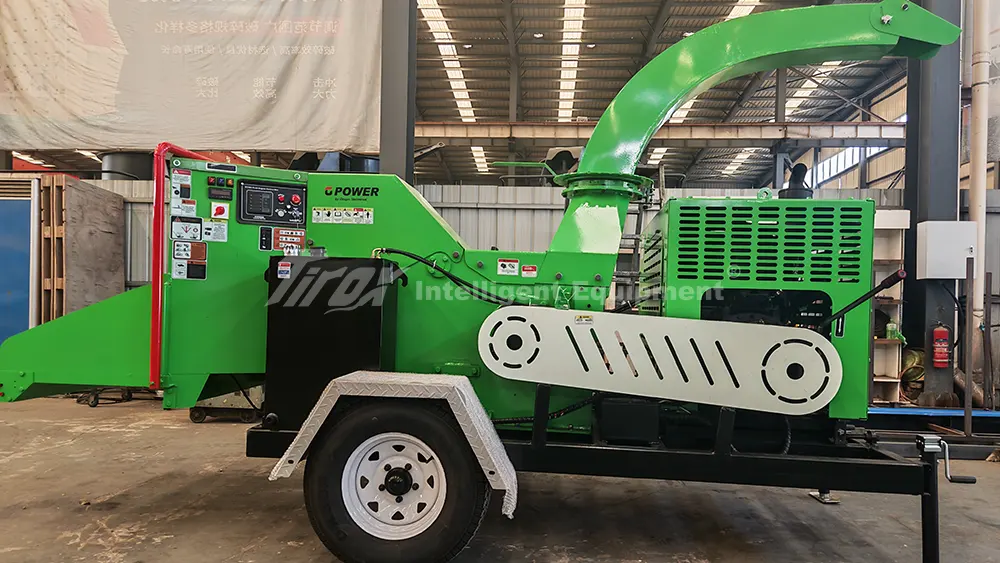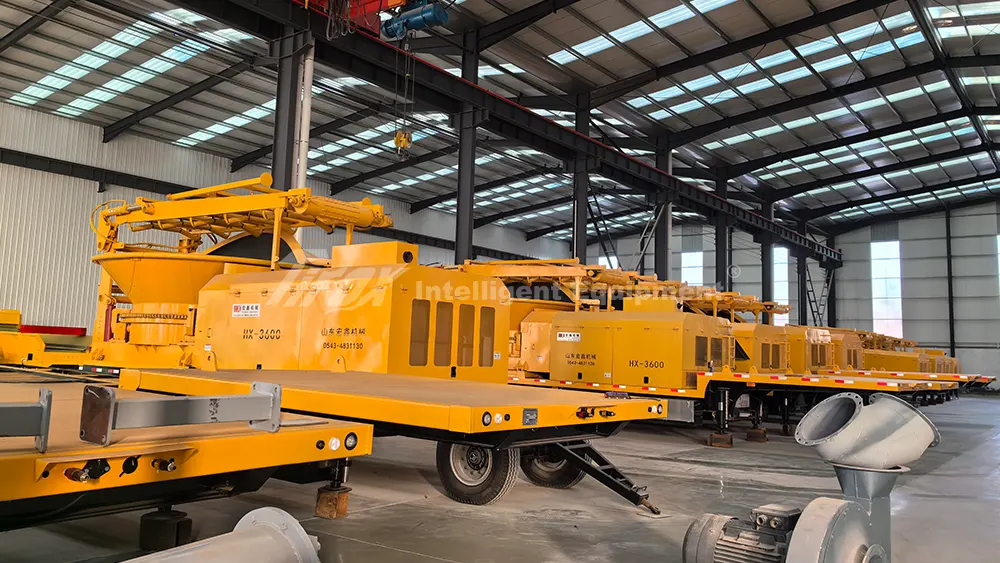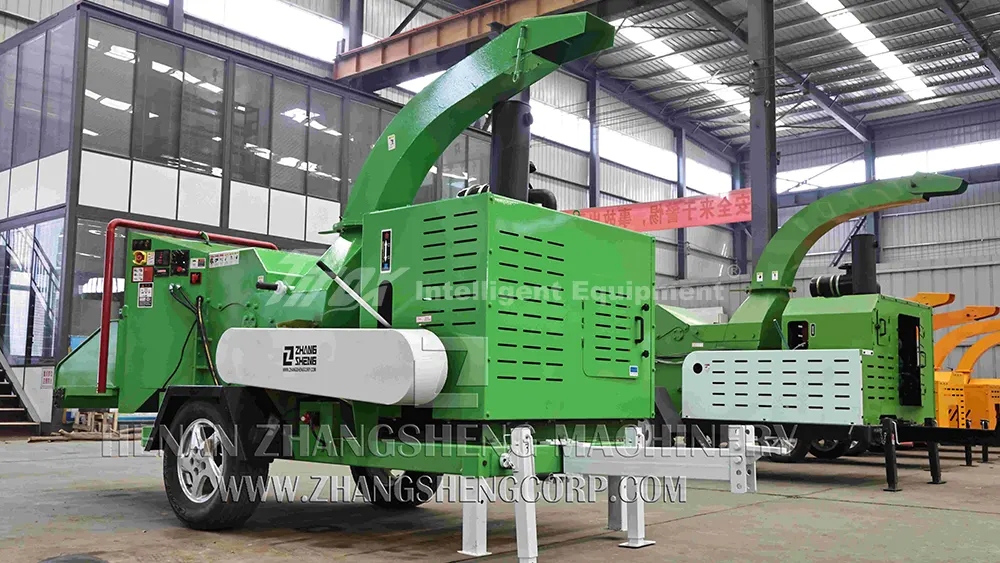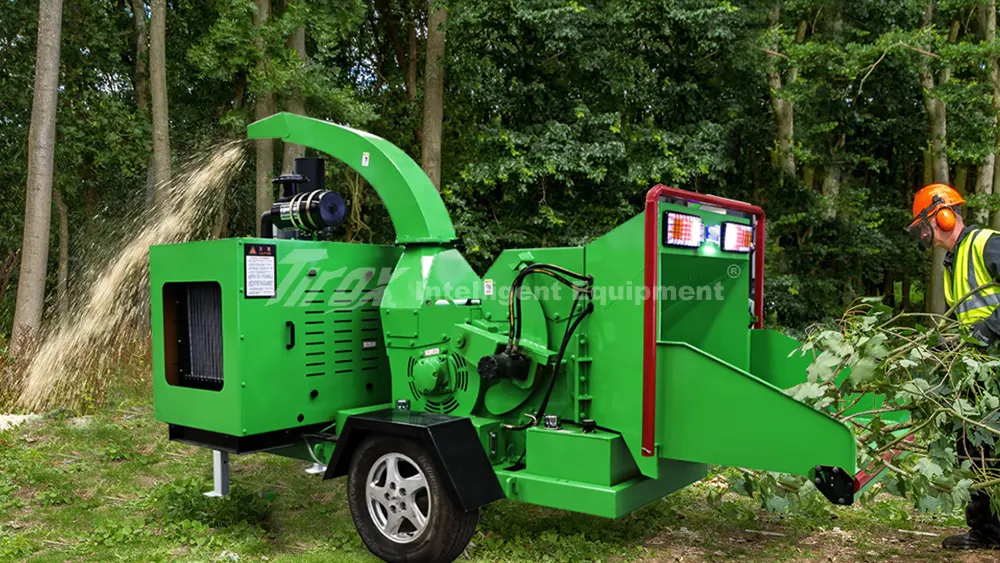You’re wondering about the noise of a wood chipper. That powerful machine doing its job can be quite loud, making you question just how noisy it really is.
Wood chippers can be quite loud, typically producing noise levels ranging from 100 to 125 decibels when operating, depending on the machine size and material being processed, necessitating proper hearing protection for safe use.
In my 22 years of building and selling wood processing equipment at TIROX, I’ve seen firsthand how impressive these machines are at turning wood waste into valuable chips. But the power needed to do that work also comes with significant noise. It is important to know about the noise levels involved to operate these machines safely and responsibly.
How many dB is a chipper?
You’re getting ready to operate a chipper, or you’re simply curious about its noise level. You need to know the typical sound intensity to prepare yourself or your workspace.
The decibel level of a wood chipper commonly falls between 100 dB for smaller, residential models and up to 125 dB or more for large commercial and industrial machines, with engine size and material influencing the exact noise output.

From my experience, understanding the sound output of a wood chipper is essential for any operator. Imagine standing next to a jackhammer, which is usually around 100 dB. A smaller wood chipper will sound similar to that. Now, for the larger, more powerful industrial ones we build, like those with 100 HP to over 300 HP engines, the noise can be much higher. These machines are designed to process substantial volumes of wood, including large branches and small trees quickly. This increased power and material processing load contribute to a higher decibel output, often reaching 120 dB or even higher. It is a critical factor in workplace safety and planning.
Factors Affecting Noise Levels
Several things make a wood chipper louder or quieter. The most obvious is the size of the machine and its engine power. Bigger engines and more robust cutting mechanisms, like the ones in our industrial-grade wood chippers and horizontal grinders, produce more noise than smaller, residential units. Another major factor is the type of material being processed. Chipping soft, green branches will be less noisy than processing hard, dry logs or material with knots and irregular shapes. The impact of the wood hitting the blades and the powerful hydraulic feed systems, which force material into the cutting chamber, all contribute to the overall noise level. The condition of the chipper also plays a role; a well-maintained machine with sharp blades will operate more efficiently and often generate less noise than one with dull blades or worn components.
Comparison to Everyday Sounds
To put 100-125 dB into perspective:
- Normal conversation: About 60 dB.
- Lawnmower: Around 90-100 dB.
- Motorcycle: About 90-100 dB.
- Chainsaw: About 100-120 dB.
- Jet engine at takeoff (100 feet away): Roughly 130 dB.
This comparison clearly shows that wood chippers operate at noise levels similar to or even louder than other loud machinery, putting them in a category where hearing protection is not just advisable but necessary.
How many decibels is a wood chipper, and what are the implications?
You understand chippers are loud, but you want to know what those decibel numbers actually mean for safety. You’re trying to figure out if it’s just annoying or if it poses a real risk.
Because wood chippers operate at decibel levels capable of causing immediate hearing damage with prolonged exposure, understanding their noise output is crucial for implementing strict safety protocols, including mandatory hearing protection and limiting exposure times.
I always emphasize with our customers the importance of safety when operating any heavy machinery, and wood chippers are no exception. The noise a wood chipper makes is not just background sound; it’s a powerful force that can impact your hearing. Continuous exposure to sounds above 85 dB can lead to permanent hearing loss over time. With wood chippers often exceeding 100 dB, even short periods of unprotected exposure can cause damage. Safety is our priority at TIROX, and we build our machines with robust construction, but operator safety during use is just as important.

Hearing Damage Risks
Exposure to high decibel levels carries significant risks.
- 85 dB: Prolonged exposure (over 8 hours) can cause hearing damage.
- 100 dB: Damage can occur in as little as 15 minutes of unprotected exposure.
- 115 dB: Damage can occur in under 1 minute of unprotected exposure.
- 120 dB and above: Instant or immediate hearing damage can occur.
Since wood chippers typically operate well above the 85 dB threshold, anyone near an operating chipper is at risk of temporary or permanent hearing loss if they do not use proper protection. This can manifest as tinnitus (ringing in the ears), difficulty understanding speech, or a general reduction in hearing sensitivity. You can find more information about decibel levels and hearing damage on reputable health or safety websites, like the CDC’s resources on noise and hearing loss.
Essential Safety Measures
Taking appropriate precautions is crucial when using a wood chipper.
- Hearing Protection: Always wear high-quality hearing protection, such as earplugs (with an NRR rating of at least 25 dB) or earmuffs (NRR 25 dB or higher). Double protection (plugs and muffs) is often recommended for industrial machines or prolonged use.
- Distance: Maintain a safe distance from the chipper when it’s operating. Noise levels decrease significantly with distance.
- Time Limits: Limit the amount of time spent directly exposed to the chipper’s noise. Take regular breaks in quiet areas to allow your ears to recover.
- Machine Maintenance: A well-maintained chipper that runs smoothly will often be less noisy than one with worn parts or misaligned components. This is why we conduct an 8-step rigorous quality inspection before our machines leave the factory.
By understanding the noise levels and implementing these simple but vital safety measures, you can protect your hearing and ensure safe operation around wood chippers.
What would 170 decibels do to you?
You’ve heard about very high decibel levels and are wondering about the extreme end of the scale. What kind of impact would an incredibly loud sound like 170 decibels have on a person?
Exposure to 170 decibels would be catastrophic, causing immediate and severe physical trauma, including ruptured eardrums, damage to inner ear structures, debilitating pain, and potentially even non-auditory effects like lung damage or internal organ damage due to intense pressure waves.
While a wood chipper, even an industrial one, does not typically reach 170 decibels, it is essential to understand that such extreme noise levels are incredibly dangerous and far beyond what the human body can safely withstand. Sounds at this intensity are not just loud; they are destructive. For example, a shotgun blast at close range or a rocket launch can sometimes approach these levels. My team and I are focused on the practical and safe operation of our equipment, ensuring that while our machines are powerful, they are designed with operator safety as a primary concern.
Immediate Physical Trauma
At 170 decibels, the sound pressure waves are so intense that they can cause immediate and irreversible physical damage.
- Eardrum Rupture: The eardrum would almost certainly rupture instantly, leading to severe pain and permanent hearing loss.
- Inner Ear Damage: Beyond the eardrum, the delicate structures of the inner ear, including the cochlea and ossicles (tiny bones), would suffer severe damage, making full recovery unlikely.
- Pain and Disorientation: The sheer intensity of the sound would cause intense physical pain, disorientation, and dizziness.
Non-Auditory Effects
At such extreme decibel levels, the impact extends beyond the ears.
- Organ Damage: The powerful pressure waves can affect non-auditory organs. Lung tissue can be damaged, and in extreme cases, internal organs can be affected, leading to hemorrhaging.
- Concussion/Brain Trauma: The force of the sound can be akin to a physical blast, potentially causing concussive effects or brain trauma.
- Death: In military or industrial incidents involving explosions or sonic booms, exposure to such extreme pressures has been known to be fatal.
Thankfully, wood chippers do not produce sounds at this hazardous level. However, this illustrates why understanding and respecting the decibel outputs of any machinery, including wood chippers, is crucial for maintaining a safe working environment and preventing injury. Always prioritize safety gear to protect yourself from the powerful sounds created by wood chippers.
Conclusion
Wood chippers produce significant noise, typically ranging from 100 to 125 decibels, making hearing protection vital. While not reaching the extreme 170 dB levels that cause catastrophic physical damage, their operational noise necessitates strict safety protocols to protect hearing and ensure a safe working environment.






